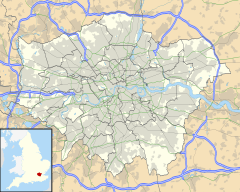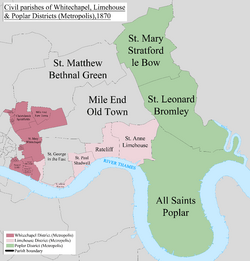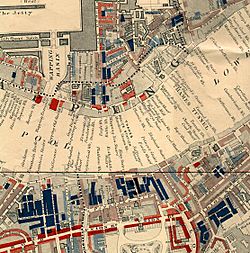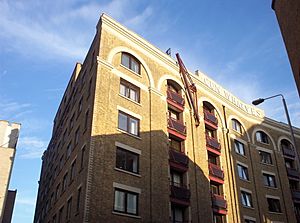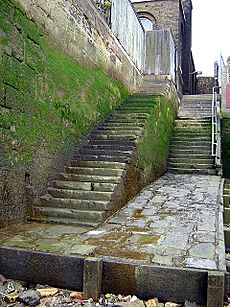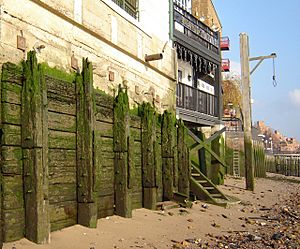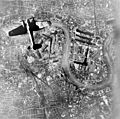Wapping facts for kids
Quick facts for kids Wapping |
|
|---|---|
 The Prospect of Whitby is a Wapping landmark. |
|
| Population | 12,411 (2011 Census.St. Katharine's and Wapping Ward) |
| OS grid reference | TQ345805 |
| London borough | |
| Ceremonial county | Greater London |
| Region | |
| Country | England |
| Sovereign state | United Kingdom |
| Post town | LONDON |
| Postcode district | E1W |
| Dialling code | 020 |
| Police | Metropolitan |
| Fire | London |
| Ambulance | London |
| EU Parliament | London |
| UK Parliament |
|
| London Assembly | |
Wapping is a cool area in East London, found in the London Borough of Tower Hamlets. It sits right next to the north side of the River Thames and a very old road called The Highway. Because it's so close to the river, Wapping has always been linked to the sea. You can still see this in its riverside pubs and old steps leading down to the water, like the famous Prospect of Whitby and Wapping Stairs. It's also home to a Royal Navy base called HMS President, plus Tobacco Dock and King Edward Memorial Park.
Many of Wapping's original buildings were knocked down when the London Docks were built. The area was also badly damaged during the Blitz in World War II. After the war, the docks became less busy, and Wapping started to look a bit run down, with huge empty warehouses. But in the 1980s, things changed! The London Docklands Development Corporation helped turn the old warehouses into fancy apartments, bringing new life to the area.
In 1986, Rupert Murdoch moved his News International newspaper printing company to Wapping. This led to a big fight with workers, known as the "Battle of Wapping".
Contents
Wapping's Past: A Look Back
How Wapping Began
The first people to live here were the Saxons, who gave Wapping its name. It means "the place of Wæppa's people." The area grew along the Thames riverbank, squeezed between the river and a marsh that is now gone. This made Wapping very long and narrow, mostly just Wapping High Street with small side streets. A historian from the 1500s, John Stow, said it was a "filthy strait passage" with small homes for sailors. A church for St. John the Baptist was built in 1617. Wapping became its own local area, called a parish, in 1694.
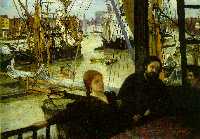
For hundreds of years, Wapping was all about the sea. Sailors, boat builders, and people who made tools for ships lived here. Wapping was also famous for 'Execution Dock'. This was where pirates and other criminals caught on the water were hanged. The hanging structure was built close to the low water mark of the river.
The Bell Inn, near Execution Dock, was run by Samuel Batts. His daughter, Elizabeth, married the famous explorer James Cook in 1762. Captain Cook had stayed at the Inn.
The Docklands Era
The Marine Police Force, thought to be England's first police force, started in 1798. It was created to stop thieves from stealing from ships in the Pool of London. Its main office is still in Wapping High Street today. It's now called the Marine Support Unit. You can visit the Thames Police Museum there to learn about its history.
In the 1800s, Wapping changed a lot when the huge London Docks were built. Many houses were destroyed to make way for the docks and giant warehouses. Wapping became cut off from the rest of London. But then, the Thames Tunnel was built, connecting Wapping to Rotherhithe under the river. This was a big deal! In 1869, Wapping tube station opened, giving people a direct train link to other parts of London.
Wapping Today
Wapping was badly damaged by German bombs during World War II. After the docks closed, it became a run-down area. But in the 1980s, the London Docklands Development Corporation took over. They filled in most of the London Docks and built new homes, shops, and businesses.
St John's Church (built in 1756) was hit by bombs during the war. Only its tower and outer walls survived. Now, the inside has been rebuilt into homes.
In 1986, Rupert Murdoch's News International built a new printing factory in Wapping. This caused a huge protest when News International moved from Fleet Street. Over 5,000 print workers lost their jobs because new technology was brought in.
The Wapping Dispute: A Big Strike
The "Wapping dispute" was a very important event for trade unions in the UK. It started on January 24, 1986. About 6,000 newspaper workers went on strike after talks with their boss, Rupert Murdoch's News International, failed.
News International had secretly built a new printing factory in Wapping. When the workers went on strike, the company started using this new factory with the help of another union.
The new factory was called "Fortress Wapping" because the striking workers tried to block it. They protested day and night, hoping to stop the company from moving. But in the end, they were not successful. In 2005, News International announced they would move the printing work to other places, like Broxbourne.
Famous Places in Wapping
One of the best things about Wapping is the River Thames itself, and the old pubs that sit along its edge. Many old 'stairs' (steps), like Wapping Old Stairs and Pelican Stairs, let people walk down to the riverbank. This area is tidal, meaning the water level changes. You can often find old pieces of pottery or other interesting things left behind by the tide. It's a popular spot for people who like to look for old treasures!
St George in the East Church
St George in the East is one of six churches in London designed by Nicholas Hawksmoor. It was built between 1714 and 1729.
During the Blitz in World War II, a bomb hit the church. The inside was destroyed by fire, but the strong walls and unique "pepper-pot" towers stayed standing. In 1964, a new, modern church was built inside the old walls.
Behind the church are St George's Gardens, which used to be the church's cemetery. Now, it's a public park. During World War II, the church's basement was used as a public air raid shelter. Even when the bomb hit, everyone inside was safely rescued!
Execution Dock: A Pirate's End
"Execution Dock" was a place on the River Thames. For over 400 years, the Admiralty (the part of the government in charge of the navy) used it to hang pirates who had been found guilty of crimes at sea. The dock was placed far enough from the shore to be in the Admiralty's area of control.
Famous pirate Captain Kidd was hanged here. Many prisoners were executed together in front of large crowds. They would be paraded from Marshalsea Prison, across London Bridge, and past the Tower of London before reaching the dock.
Wapping's Historic Pubs
There are three very old and famous public houses (pubs) near the old stairs.
- The Prospect of Whitby is by Pelican Stairs. Some say it's the oldest pub along the Thames, though this is debated. There has been a pub on this spot since the time of Henry VIII. It's named after a famous ship that used to dock in Wapping. A copy of the old Execution Dock hanging structure is kept nearby.
- The Town of Ramsgate is also a very old pub, located next to Wapping Old Stairs.
- The Captain Kidd pub is between the other two. It's named after the Scottish pirate William Kidd, who was hanged in Wapping in 1701. Even though the pub is in a 17th-century building, it only opened in the 1980s.
Getting Around Wapping
Trains
The local train station is Wapping. It's on the London Overground East London line. The station is in Travelcard Zone 2.
Wapping station first opened in 1884. The East London line closed for a while in 2007 and then reopened in 2010 as part of the Overground system.
Buses
You can catch bus route 100 and D3 in the Wapping area.
Roads
Wapping is connected to the main road network by The Highway (A1203). This road runs east to west north of Wapping.
Walking, Cycling, and Waterways
The Thames Path is a great route for cyclists and walkers that goes through Wapping. The Ornamental Canal also runs through the middle of the area, leading to Shadwell Basin.
Learning in Wapping
Famous People from Wapping
Many interesting people have connections to Wapping:
- W.W. Jacobs, who wrote the famous story The Monkey's Paw, was born here.
- The American painter James McNeill Whistler lived in Wapping for a time and painted his famous picture Wapping (1860-1864) while exploring the Thames. This painting is now in the National Gallery of Art Washington.
- John Newton, who wrote the well-known hymn Amazing Grace, was born in Wapping.
- Arthur Orton, known as the Tichborne Claimant, was also born here.
- The American singer and actress Cher lived in Wapping during the 1990s.
- TV presenter Graham Norton lived in Wapping in 2012.
Images for kids
-
Wapping by James McNeill Whistler
-
A Heinkel He 111 bomber flying over the Surrey docks and Wapping during the East End of London Blitz on September 7, 1940.
See also
 In Spanish: Wapping para niños
In Spanish: Wapping para niños


